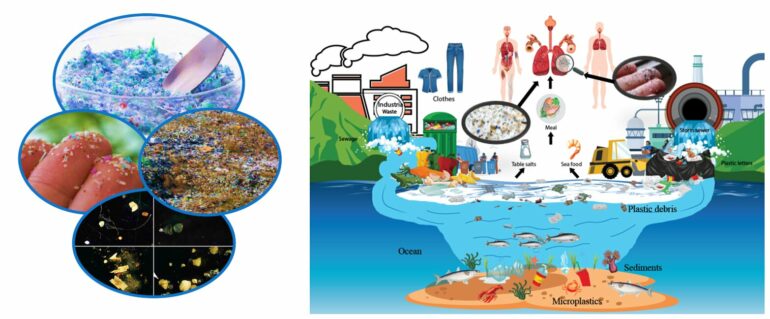Research shows humans might inhale about 16.2 bits of microplastic every hour, which is equivalent to a credit card over an entire week. And these microplastics—tiny debris in the environment generated from the degradation of plastic products—usually contain toxic pollutants and chemicals.
Inhaled microplastics can pose serious health risks, so understanding how they travel in the respiratory system is essential for prevention and treatment of respiratory diseases. In an article published on June 13 in the journal Physics of Fluids, researchers from the University of Technology Sydney, Western Sydney University, Urmia University, Islamic Azad University, the University of Comilla, and Queensland University of Technology developed a computational fluid dynamics model to analyze microplastic transport and deposition in the upper airway.
“Millions of tons of these microplastic particles have been found in water, air, and soil. Global microplastic production is surging, and the density of microplastics in the air is increasing significantly,” said author Mohammad S. Islam. “For the first time, in 2022, studies found microplastics deep in human airways, which raises the concern of serious respiratory health hazards.”
The team explored the movement of microplastics with different shapes (spherical, tetrahedral, and cylindrical) and sizes (1.6, 2.56, and 5.56 microns) and under slow and fast breathing conditions.
Microplastics tended to collect in hot spots in the nasal cavity and oropharynx, or back of the throat.
“The complicated and highly asymmetric anatomical shape of the airway and complex flow behavior in the nasal cavity and oropharynx causes the microplastics to deviate from the flow pathline and deposit in those areas,” said Islam. “The flow speed, particle inertia, and asymmetric anatomy influence the overall deposition and increase the deposition concentration in nasal cavities and the oropharynx area.”
Breathing conditions and microplastic size influenced the overall microplastic deposition rate in airways. An increased flow rate led to less deposition, and the largest (5.56 micron) microplastics were deposited in the airways more often than their smaller counterparts.
The authors believe their study highlights the real concern of exposure to and inhalation of microplastics, particularly in areas with high levels of plastic pollution or industrial activity. They hope the results can help inform targeted drug delivery devices and improve health risk assessment.
“This study emphasizes the need for greater awareness of the presence and potential health impacts of microplastics in the air we breathe,” said author YuanTong Gu.
In the future, the researchers plan to analyze microplastic transport in a large scale, patient-specific whole lung model that includes environmental parameters such as humidity and temperature.
More information:
How microplastics are transported and deposited in realistic upper airways, Physics of Fluids (2023). DOI: 10.1063/5.0150703
Provided by
American Institute of Physics
Citation:
Study shows how microplastics stick around in human airways (2023, June 13)



